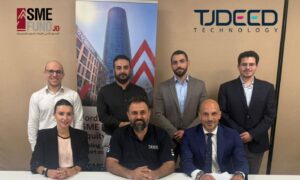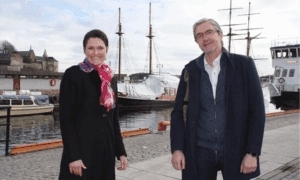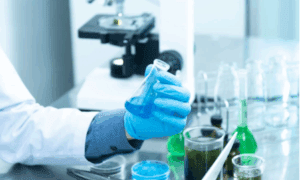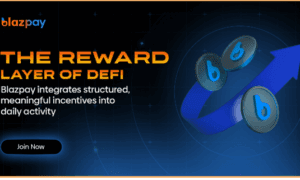How Businesses Learn from Challenging or Failed Innovations
In the fast-paced world of innovation, learning from failures is as crucial as celebrating successes. Insights from a CEO and a Director of Customer Relations reveal invaluable lessons on navigating the complexities of groundbreaking projects. This article begins with the importance of balancing engagement with simplicity, and concludes with the significance of educating users on metric-centric data. Discover fifteen unique expert insights that can transform your approach to innovation.
- Balance Engagement With Simplicity
- Simplify User Experience
- Thoroughly Test New Designs
- Prioritize Early User Feedback
- Time Innovations to Market Readiness
- Embrace Patience and Feedback Loops
- Test Innovations in Real-World Scenarios
- Broaden Supplier Network for Reliability
- Use Pilot Groups Before Big Changes
- Offer Long-Term Customer Solutions
- Scale Innovation Realistically
- Add Testers to Design Team
- Enhance Human Connection with Tech
- Understand Customer Comfort Zones
- Educate Users on Metric-Centric Data
Balance Engagement With Simplicity
We experimented with a gamification feature in Toggl Plan, hoping to make planning tasks more interactive and engaging, but it led to a counterproductive environment where users felt pressured rather than motivated. Despite testing the concept with small focus groups, the broader user base found it intrusive and distracting. This experience reinforced the importance of balancing engagement features with the user’s need for simplicity and focus.
After the gamification feature didn’t work out, we restructured our product-development cycle to include more diverse user personas and use cases, making sure our new features cater to various user types rather than one specific segment. We now also place a stronger emphasis on testing for user impact beyond engagement metrics. This shift has enabled us to create more holistic, universally beneficial features that integrate naturally into our product ecosystem.
Alari Aho, CEO and Founder, Toggl Inc
Simplify User Experience
We launched an innovative project aimed at creating a personalized learning hub using AI to match learners with tailored corporate training content. However, the project faced an unexpected challenge—many users found the system overwhelming due to the sheer volume of choices, which ironically led to decision fatigue. Engagement dropped, and the project wasn’t meeting expectations.
Instead of viewing this as a failure, we took a step back and focused on simplifying the user experience. We implemented a streamlined interface that offered fewer, but highly relevant, recommendations based on key data points. This lesson taught us that while innovation is exciting, usability and user experience must always come first. Now, every innovation we pursue at eLearning Industry starts with understanding the user’s journey to ensure that new features truly solve a problem, rather than complicating it.
Christopher Pappas, Founder, eLearning Industry Inc
Thoroughly Test New Designs
As an owner of a contract-manufacturing company, I’ve learned that innovative projects often require trial and error. Early on, we developed a new packaging design that seemed brilliant on paper but failed in execution. The material was too flimsy, and products were damaged in shipping.
We quickly learned from this mistake. Now, we do thorough testing of any new designs before full implementation. We start with small test runs to identify issues, make improvements, and minimize losses. We also gather feedback from customers and end-users to understand their needs and experiences.
More recently, we implemented a new inventory-tracking system to improve efficiency. The transition was difficult, and productivity dropped initially. However, by providing hands-on employee training and starting with a small pilot group, we were able to make tweaks to the system before company-wide implementation.
While setbacks are inevitable, we focus on continuous improvement by evaluating failed projects and using data to drive better decisions. Failure is an opportunity to strengthen your processes and relationships for future success. With hard work and persistence, innovative ideas can become reality.
Albert Brenner, Co-Owner, Altraco
Prioritize Early User Feedback
We developed a feature aimed at automating complex workflows for our clients. While the concept was highly innovative, it faced significant challenges during implementation due to unanticipated client customization needs and integration issues with existing software. Initially, this led to lower adoption rates and frustration among our users.
However, the experience proved invaluable. We revisited the project, collaborating closely with clients to better understand their specific pain points. This allowed us to pivot toward a more flexible and modular design. The lessons learned from this failure emphasized the importance of early user feedback, iterative testing, and a customer-centric approach.
As a result, we now involve clients at every stage of product development and ensure our solutions are scalable and adaptable, which has significantly improved both user satisfaction and product success in future innovations.
Chris Hunter, Director of Customer Relations, ServiceTitan
Time Innovations to Market Readiness
We tried integrating augmented reality (AR) into our signage software, envisioning a future where users could interact with digital signs in real time through their mobile devices. Unfortunately, the technology wasn’t as accessible as we hoped, and many clients lacked the devices necessary to make AR experiences work smoothly, resulting in low adoption. We had to pivot and shelve the project, realizing the importance of timing our innovations to match market readiness.
We’ve adopted a philosophy of building smaller, modular prototypes first, allowing us to fail quickly and cheaply, rather than investing heavily upfront. This shift means we can assess user interest and technical viability without overcommitting resources, making our innovation process more agile. It’s a practice that keeps us adaptable and minimizes the risks associated with developing cutting-edge features.
Mark McDermott, CEO & Co-Founder, ScreenCloud
Embrace Patience and Feedback Loops
I once led a project to streamline our inventory system by integrating a new software platform. It seemed like the perfect solution, but the transition was more complex than anticipated, leading to delays and errors. Rather than scrapping the project, we regrouped, brought in expert consultants, and adjusted our timeline.
The key lesson was that rushing innovation can backfire. Now, I ensure that every new tool we implement is tested thoroughly, with feedback loops in place. This experience taught me to embrace flexibility and patience when driving change. It wasn’t a failure, just a stepping-stone toward more brilliant innovation.
Tammy Sons, Founder/CEO, TN Nursery
Test Innovations in Real-World Scenarios
In one instance, we launched an AI-chatbot project aimed at streamlining customer service on our website. The innovation was exciting, but we underestimated the complexity of the integration with our existing system. We faced challenges with user engagement and technical compatibility, which led to an initial rollout failure. Customers found it confusing, and it didn’t perform as expected in handling queries, resulting in increased frustration rather than efficiency.
From this experience, we learned the importance of testing innovations thoroughly in real-world scenarios before a full-scale launch. Instead of abandoning the project, we analyzed the data to understand where things went wrong. We found that users needed more intuitive guidance and personalization in their experience with the chatbot. By going back to the drawing board and focusing on a more user-centric design, we relaunched a much-improved version that now plays a crucial role in customer engagement.
The key lesson here was not to view failure as the end but as part of the innovation process. Every obstacle taught us something valuable, from user behavior insights to technical adjustments. It strengthened our approach to future projects by embedding testing and feedback loops early in the process.
Azam Mohamed Nisamdeen, Founder, Convert Chat
Broaden Supplier Network for Reliability
One project that comes to mind when discussing unforeseen challenges is the initiative to launch a collection emphasizing rare, ethically-sourced blooms. The vision was ambitious, yet the complexities of sourcing posed unexpected hurdles. Several suppliers faced crop failures due to uncontrollable weather conditions, which, in turn, delayed our project timeline. This situation taught us the importance of having diverse and reliable sourcing channels.
In response, we broadened our supplier network to ensure sustainability and adaptability. This experience was invaluable, reinforcing the necessity of agility in innovation and reminding us that flexibility often seeds the most remarkable breakthroughs.
Kate Hill, Founder and Director, Kate Hill Flowers
Use Pilot Groups Before Big Changes
As a construction manager, I’ve faced many challenges bringing innovative ideas to life. Early in my career, I proposed a new building technique to speed up projects while reducing costs. However, it failed during execution, as we hadn’t properly tested and prepared.
We learned from this mistake and now do extensive planning and small-scale trials before implementing big changes. For example, when transitioning to new project-management software, we started with a pilot group to work out issues before rolling it out company-wide.
One of our recent innovations was a partnership with a local trade school. We provide internships and donations, and in return have access to motivated, trained workers. The transition was difficult, as productivity dropped initially while interns learned on the job. But by providing hands-on mentorship, we built a program that now supplies us with a steady pipeline of talent and goodwill in the community.
While new ideas often face obstacles, we focus on learning from failures and strengthening relationships. Our trade school partnership and revised processes are examples of turning setbacks into future success through persistence and teamwork. Continuous improvement is key.
Jimmy Hertilien, Senior Project Manager, Herts Roofing & Construction
Offer Long-Term Customer Solutions
At Alta Pest Control, one innovative project that faced challenges was when we initially rolled out one-time pest-control treatments. While it seemed like a convenient and appealing option for clients who wanted quick results, we quickly realized that the approach wasn’t as effective in the long term. Customers were dissatisfied when pests would return, and they found it costly to keep scheduling new treatments.
The failure of this model taught us a valuable lesson: short-term solutions don’t always meet the customer’s real needs. In response, we shifted to offering year-long contracts with free re-treatments. This provided better long-term pest control and greater customer satisfaction. It was a challenge to get some clients on board with the change, but we learned the importance of communicating the value and benefits of a more comprehensive solution.
The key takeaway was that innovation needs to be customer-centered and long-term focused. This experience improved our approach to future projects, ensuring that any new services we offer are not just quick fixes but sustainable solutions that build trust and loyalty over time.
Faith Rock, Marketing Specialist, Alta Pest Control
Scale Innovation Realistically
Last year, we introduced a subscription-based model for certain product categories. The idea was to offer customers the convenience of recurring shipments for items they might frequently reorder, like wallpaper tools, adhesives, and related accessories. It seemed like a great way to create consistent revenue while also building customer loyalty through convenience.
The challenge, and something I think a lot of businesses don’t initially realize, was that not every product fits neatly into a subscription model. We discovered fairly quickly that customers didn’t reorder these items as often as we’d anticipated. Unlike consumables like skin care or supplements, the frequency of repurchasing wallpaper tools or adhesives was much lower. This created friction, with some customers even feeling pressured by the subscription, resulting in cancellations and poor reviews.
Beyond that, there were unforeseen logistical issues. Managing inventory for subscription products proved difficult because demand fluctuated more than we expected. We overestimated how many customers would subscribe, resulting in surplus supplies in certain months and shortages in others. Furthermore, some customizations we allowed in the subscription process—like letting customers swap items or delay shipments—created a lot of back-end complexity. The systems we had in place weren’t designed to handle the level of customization we promised, which led to errors and delays in fulfilling orders.
What we learned from this project was that just because subscription models work in other industries doesn’t mean they’re a one-size-fits-all solution for e-commerce. Products that have unpredictable usage rates or long shelf lives aren’t ideal for this type of offering. Another takeaway was the importance of scaling innovation in realistic increments. We launched the subscription service with too many variables—customization options, flexible shipping dates, and product swaps—before we had fully worked out the operational impact. This made the rollout messy and harder to manage.
Reilly James, Marketing Manager & eCommerce Optimization Expert, William Morris Wallpaper
Add Testers to Design Team
We had a project where we were building an AI tool for automating customer support.
We thought it would be really useful, but during testing, we found that people found it too complicated and the AI responses didn’t feel natural. The feedback was tough, but instead of giving up, we decided to make changes.
We brought in some of those same testers to help us redesign it, making it simpler and easier to use. In the end, the final product was different from what we first planned, but much better. This experience taught us to pay close attention to user feedback and be open to making changes. Now, we always include user feedback early in our process, and it’s helped us avoid similar mistakes.
Siddharth Kashiramka, Product Leader, AGI and Mentor @ Startup Accelerator
Enhance Human Connection with Tech
There was a moment when we introduced an online-scheduling system, hoping to make therapy more convenient. But something unexpected happened—clients felt a subtle disconnect, as if the intimacy of our sessions was diluted.
What we learned is that technology, no matter how well-intentioned, can never replace the deep, human connection people come to therapy for. We adjusted course, recognizing that people don’t just seek efficiency; they seek to feel seen, heard, understood. Technology should serve as a bridge, not a wall. In the end, it’s the quality of presence, not just the ease of process, that matters most.
Zita Chriszto, Licensed Psychologist, Dubai Psychology
Understand Customer Comfort Zones
During the pandemic, we launched an online consultation service where customers could get real-time advice on electrical issues through video calls. The idea was to help people who were stuck at home troubleshoot simple problems without needing an electrician on-site. We thought it was a win-win: customers could avoid the hassle of having someone come to their house, and we could offer a convenient solution during a tough time. But it didn’t take off the way we expected.
The problem wasn’t with the technology or the idea itself. It was that electrical work is inherently hands-on, and most customers still felt uneasy trying to fix things themselves, even with guidance. We underestimated how uncomfortable people were with even the simplest electrical tasks, like replacing a switch or diagnosing a tripped circuit. It was clear that many of our customers preferred a professional to handle these things in person, no matter how straightforward the issue seemed to us.
This taught us that it’s just as important to know your audience’s comfort zone as it is to come up with new ideas. Sure, the service was technically sound, but it didn’t meet our customers’ needs. So, instead of doubling down on the video consultations, we shifted our focus to offering more educational content—things like “how-to” videos for minor issues and better communication about when it’s time to call in a professional. This way, we still provided value without asking people to step too far out of their comfort zone.
Daniel Vasilevski, Director & Owner, Bright Force Electrical
Educate Users on Metric-Centric Data
Launching Klipfolio PowerMetrics in 2020 was an exciting step forward, marking a major milestone in simplifying data analytics for business users. However, the journey wasn’t smooth. Initially, many businesses struggled to transition from traditional data reporting to our metric-centric vision of the future. The key challenge lay in rethinking how they handled data—moving from raw numbers to defined metric artifacts. Skepticism was common, as users were hesitant to trade their familiar reports and dashboards for a catalog of clearly-defined business metrics.
To address this, we refined our messaging, focusing on educating both data teams and end users. We demonstrated how a metric-centric architecture could solve data-trust issues by offering a single source of truth for critical KPIs. Additionally, by providing an accessible catalog of metrics, we created a safe, user-friendly environment where business users could explore data confidently without needing to get into the technical details.
From these challenges, we learned the importance of working more closely with users. We introduced comprehensive training and hands-on workshops and feedback sessions. This approach helped us listen, learn, and iterate on our messaging and our product roadmap while empowering prospects and customers to move forward confidently.
It’s back to basics: Speak with as many users as possible, observe and listen, create a hypothesis, and then be agile in developing and testing theories. We applied this to our messaging, pricing, onboarding flows, and key product features. Thus, PowerMetrics today stands stronger, benefiting from the insights gathered through these initial hurdles, ultimately supporting businesses to harness data confidently and effectively using metrics!
Allan Wille, CEO & Co-Founder, Klipfolio
Related Articles
- The Impact of Effective Leadership on Fintech Business Growth
- Navigating Fintech’s Future: Balancing Innovation with Compliance in a
- Innovative Integration of Machine Learning in Database Systems



































